Behind The Scenes at a Dairy Farm
This past weekend I had the opportunity to visit the Heins Family Farm in Higginsville, Missouri. In this post, I am going to share everything I learned from that experience. In addition, I’ll tell you how you can support Feeding America during National Dairy Month to help those in need in our community. Keep reading for a behind the scenes look at a dairy farm, the role of dairy farmers in fighting hunger and food insecurity, and more!
Disclosure: I have partnered with Midwest Dairy for this post & will be compensated monetarily; however, all opinions expressed are my own. I only work with brands that I believe in and that align with my mission for Wellness For The Win.

why you should care about where your food comes from
In case you didn’t already know, I have a huge passion for food. As a Registered Dietitian and consumer, I feel that it is my duty to do my research and learn about where food comes from and how it is produced. This is something I’ve become increasingly interested in as I’ve gotten older, especially in regards to animal products. I’m not a vegetarian, but I do love animals. It’s important to me that they are treated with respect.

There was recently a story in the media about employees at a dairy farm treating their animals poorly, and it broke my heart. However, this was an isolated incident. It makes me sad to know that incidents like this make thousands of people want to avoid ALL dairy and/or animal products.
There are 42,000 dairy farms in the United States, including 7,000 in Midwest Dairy’s 10 states, that rely on consumers purchasing dairy products to support their livelihood. 95 percent of U.S. dairy farms are family owned and operated.

I have had many conversations with individuals from the agriculture community. I would argue that the vast majority of farmers treat their animals with love and respect and are extremely passionate about providing safe, nutritious food to the public.
Before you swear off all dairy products, do your research. Get curious. Talk to your local farmers. Ask questions. We don’t know what we don’t know! Most farmers are more than happy to help educate you about what they do.
who is midwest dairy?
Midwest Dairy is funded by farmers across a 10-state region, including Minnesota, North Dakota, South Dakota, Iowa, Illinois, Missouri, Kansas, Arkansas and eastern Oklahoma.
Midwest Dairy works on behalf of their 7,000 dairy farm families to build dairy demand by inspiring consumer confidence in their products and production practices. They want to help you feel safe purchasing these products for your families, as you should!
This summer for National Dairy Month, America’s dairy community, including Midwest Dairy, is teaming up with Feeding America, the nation’s largest domestic hunger relief organization, and encouraging communities to help children who are struggling with food insecurity.
hunger is prevalent throughout the united states, and increases during the summer
Did you know that one in six kids in the United States faces hunger? Unfortunately, this problem is further complicated in the summer months, when children don’t have the structure of school meals to provide them with the nourishment they need to grow.
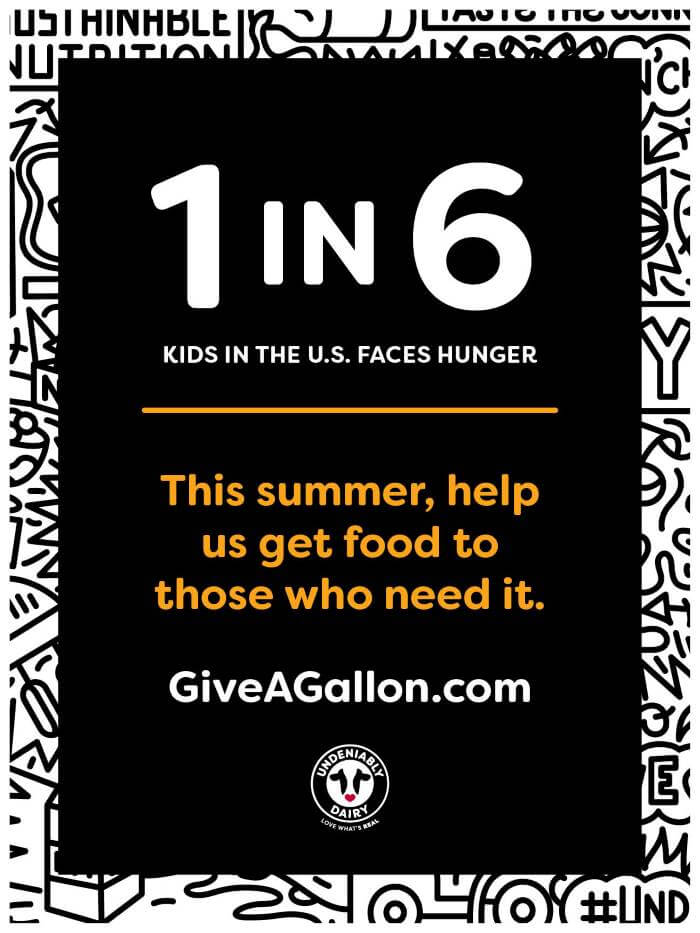
Feeding America released the results from their 2019 Map the Meal Gap study, which shed light on our nation’s child hunger crisis. Map the Meal Gap is the only study that provides local-level estimates of food insecurity across the country.
According to the report, children are more likely to be at risk of hunger than the general population in nearly every state, county and congressional district in America.
june is national dairy month
Every year, National Dairy Month is a time to celebrate the dairy community, delicious dairy products, dairy farmers and all they make possible. As previously mentioned, the focus of National Dairy Month this year is on food insecurity, specifically for children.
When food banks have the money and resources they need, they’re better able to provide local families with nutritious food, including dairy. This is why we need your help!
Fresh milk is one of the top five most-requested food items by Feeding America’s food banks, but milk is harder for people to donate because it is perishable.

Harvesters in Kansas City is a Feeding America food bank, so the donations from our area will be distributed through them. I have had the opportunity to work with Harvesters over the past few years to support their mission of feeding the hungry in our community. It is so awesome to see these two worlds of mine collide!
HOW YOU CAN help feed children in need
Do you want to help children and families in need, too? Here’s how you can make a difference:
- Go to giveagallon.com and donate so kids in your community have access to high-quality nutrition, including milk. *All donations are tax deductible.
- You can donate as little as $5, all the way up to $100+, or anywhere in between. Every single dollar counts!
More than 18 million kids in need may miss out on milk’s nutrition when they lose access to free or reduced-price meal programs at school.
Food banks are crucial for providing nourishment to millions of Americans, and milk is one of the most requested items. Milk is the top food source for three of the nutrients most likely to be missing in kids’ diets – calcium, vitamin D and potassium. But despite the demand, it’s one of the least donated items at food banks. On average, food banks are only able to provide the equivalent of less than one gallon per person per year.
Source: giveagallon.com
What are dairy foods?
Just to quickly review, dairy foods include milk and all foods that are made from milk. Examples of dairy foods include:
- Milk
- Cheese
- Yogurt
- Ice cream
- Cottage cheese
- Cream
- Butter/ghee
- Sour cream
- Kefir
- Whey/milk powder
is dairy good for you?
Milk is packed with essential nutrients kids need to grow, including protein, calcium, vitamin D and potassium. Dairy contains a combination of carbohydrates, protein and fat (fat content varies depending on the type) to contribute beneficial nutrients to anyone’s diet. In addition, it is an affordable option that is widely available. Head to this post for more information about the health benefits of dairy products!
behind the scenes at a dairy farm: what i learned
Below I am sharing some highlights of what I learned at the Heins Family Farm.
The Reproduction Side Of Things
- They have all female cows on the dairy farm, since they produce the milk. The cows typically have one calf about every 13 months; sometimes they have twins.
- All breeding is done through artificial insemination. This is because, frankly, bulls are pretty mean. This helps keep both the farmers and the other cows safe.
- When the calves are born, they are separated from their mom. The farmers told us this is because the moms aren’t very “motherly”. They will often birth the calf, and then walk away to go eat, sleep, etc. The farmers put the calves in individual crates in the first few days of life so they can monitor them and ensure they are getting all the nutrition they need.
- The calves bottle feed for the first five days.
- They reserve colostrum (i.e. the first secretion from the mammary glands after giving birth, which is very rich in antibodies and nutrients) so they have enough when new calves are born.
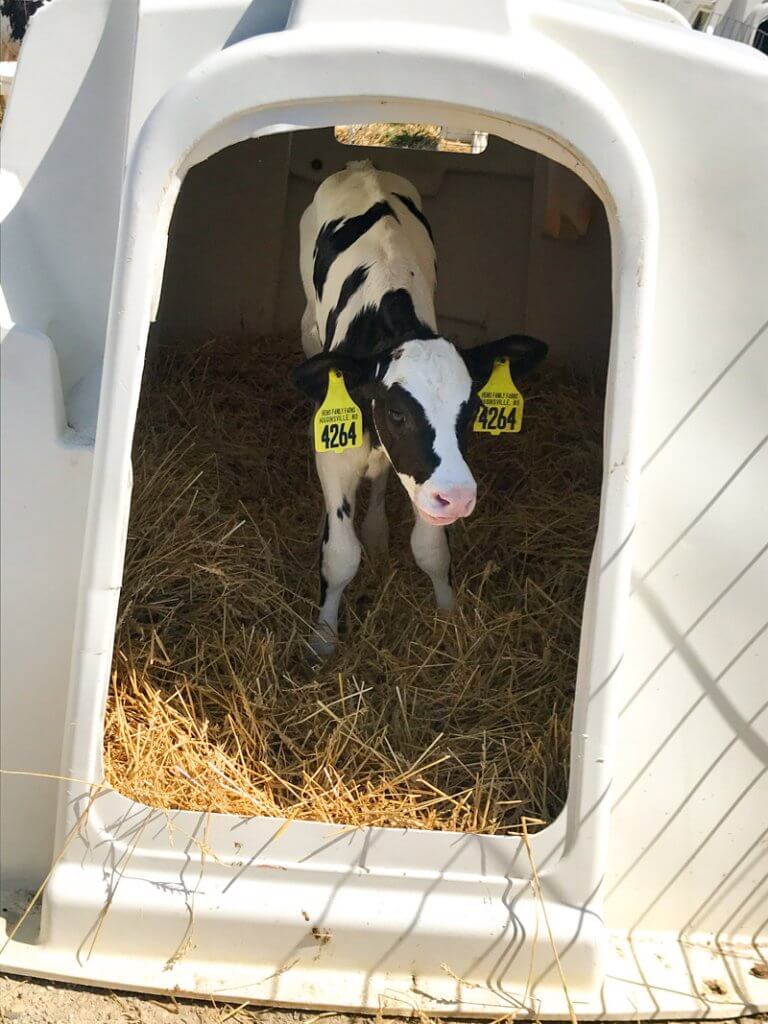
The Cows’ Living Conditions
- I am aware there is a lot of concern about how animals are treated on farms, including their living conditions. I was relieved to see that the cows were in open, spacious pens.
- Chris Heins told us that cows actually prefer the cold/cool temperatures. They start getting heat stressed at 60 degrees F, so they keep fans running and use misters to cool them off.
- Because the cows prefer cooler temps, there are more dairy farms in the Northern states. However, we have to have some in this area to make dairy available to the surrounding states, since dairy is perishable and locally sourced.
- The roof is open to the North and South. One side is closed in the winter to protect the cows from the elements.
- Farmers release a large amount of water to flush through the pen every few hours to clean out waste and keep their area clean.
- The calves are in small, individual pens until they are about 2 months old. This is because they have very weak immune systems until then. They are better able to monitor them if they get sick, and keep them from passing on illnesses to others.
- Once they are older, they go into a larger pen and get socialized in groups of 8. They are all grouped by age so the larger cows don’t gang up on the smaller cows.

Milking the Cows & Where Does Their Milk Go?
- Their milk-producing cows weigh anywhere from 1450 lbs up to 1600-1700 lbs. Wow!
- The Heins Family Farm has 650 cattle that they milk.
- It takes 4.1 minutes to milk a cow, and they do this three times a day.
- The Heins Family Farm milks the cows, then cools the milk down from 102 degrees F to 37 degrees F. Next, they send it off to a plant to be pasteurized, bottled and sent off to grocery stores.
- Most of their milk either goes to the Kansas City area or to Springfield, MO.
- They sell to Dairy Farmers of America and their milk goes to one of the Hiland plants.
- Because milk is perishable, it is always sold locally. Most milk is sold within a 200 mile radius (maximum) of where it was produced.
- The Heins Family Farm produces 6000 gallons of milk a day.
- The timeline from the cow being milked to the milk getting to the grocery store shelves can be less than 24 hours. The industry standard is on average 48 hours.
What Do The Cows Eat?
- Their feed is made up of mostly corn silage, as well as cottonseed, alfafa and a variety of grains.
- The Heins Family Farm has a nutritionist that comes on site frequently. The nutritionist will assess the cows and feed, and make adjustments based on the specific nutrients that certain groups of cows need.
- The nutritionists are very particular about their rations and giving the cows the correct breakdown of nutrients.
- The cows eat approximately 110 lbs of feed per day.

Do They Use Antibiotics and/or Hormones In Their Cows?
- Antibiotics are only used on individual cows if and when they have an illness that needs to be treated.
- When a cow is on antibiotics, they are pulled from the line and none of their milk will be sold.
- Cows do not re-enter the line until they test negative for antibiotics.
- NO food can go to market until it tests 100% negative for antibiotics. This goes for both dairy and meat products.
- Bovine somatotropin (bST) is a naturally occurring protein hormone produced by a cow’s pituitary gland. Present in all cows, bST regulates metabolic activities, helping young cattle grow and adult cows produce milk. It is not a steroid but rather a protein hormone. A small amount of this hormone is naturally present in all milk, including organic products. In fact, hormones are naturally present in all foods of plant and animal origin, including milk. When milk is consumed, the small amount of bST present is broken down completely by the body’s digestive system, just as is any other protein. (Source: MidwestDairy.com)
- Heins Family Farm does not give their cows hormones; however, some farms do. It can actually help them be more efficient and sustainable (use fewer resources). Studies have shown that the milk produced from these cows is virtually identical in terms of quality, safety and nutritional composition as those without it, as well as USDA certified organic milk.
- To learn more about the hormones sometimes used in dairy, click here.
behind the scenes at a dairy farm: photos
Here are a few more photos from our day at the Heins Family Farm in Higginsville, MO!
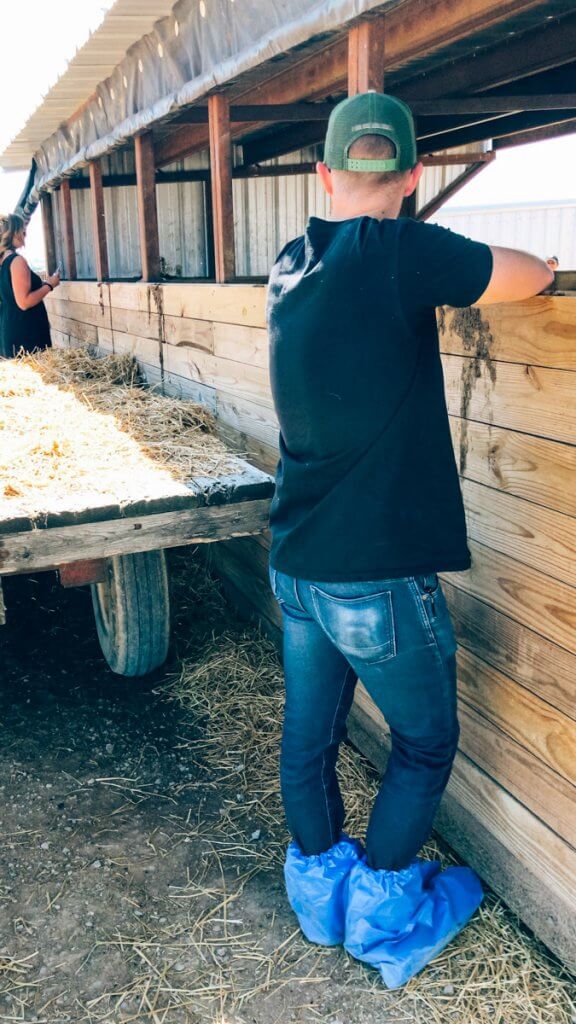
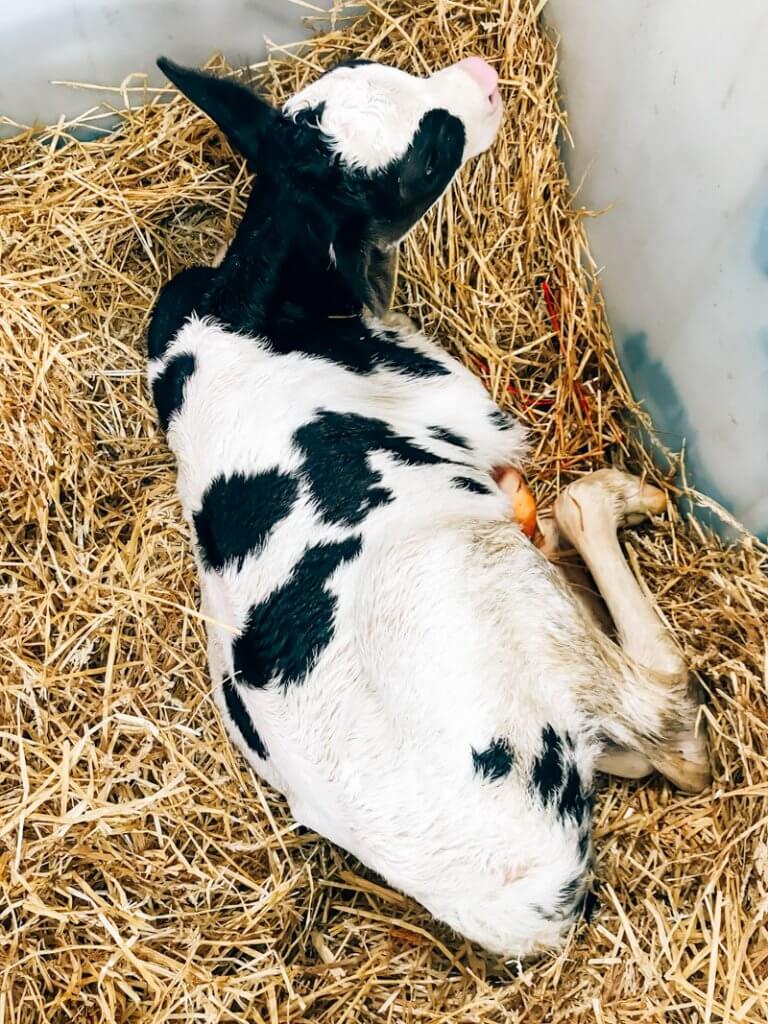
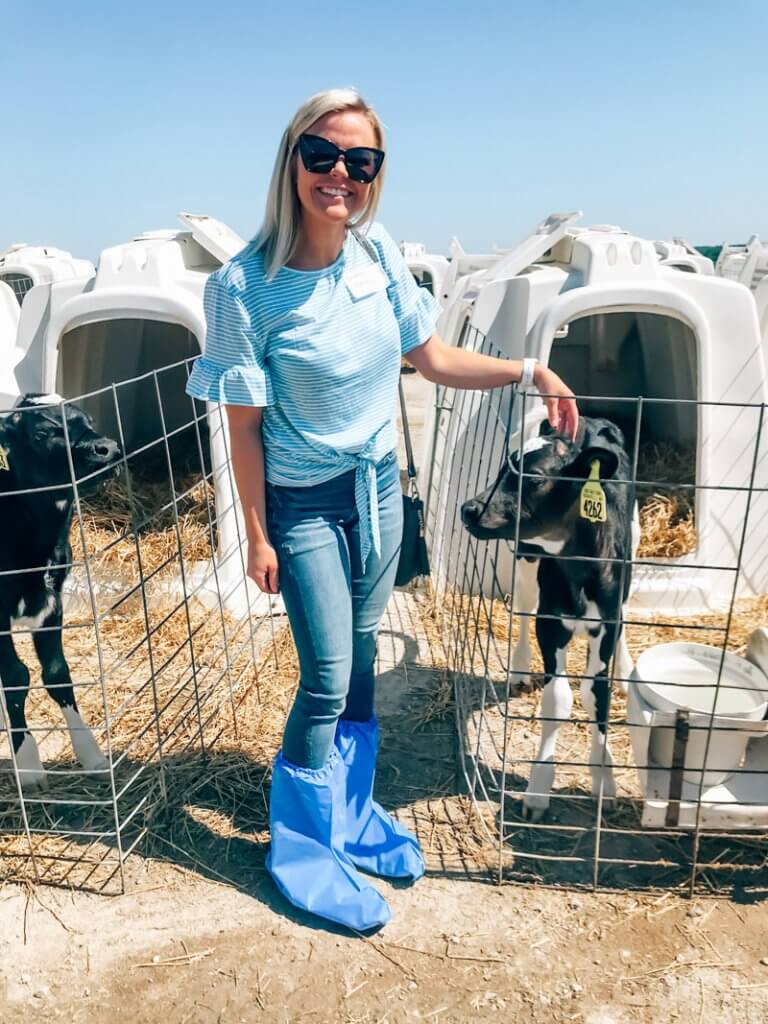
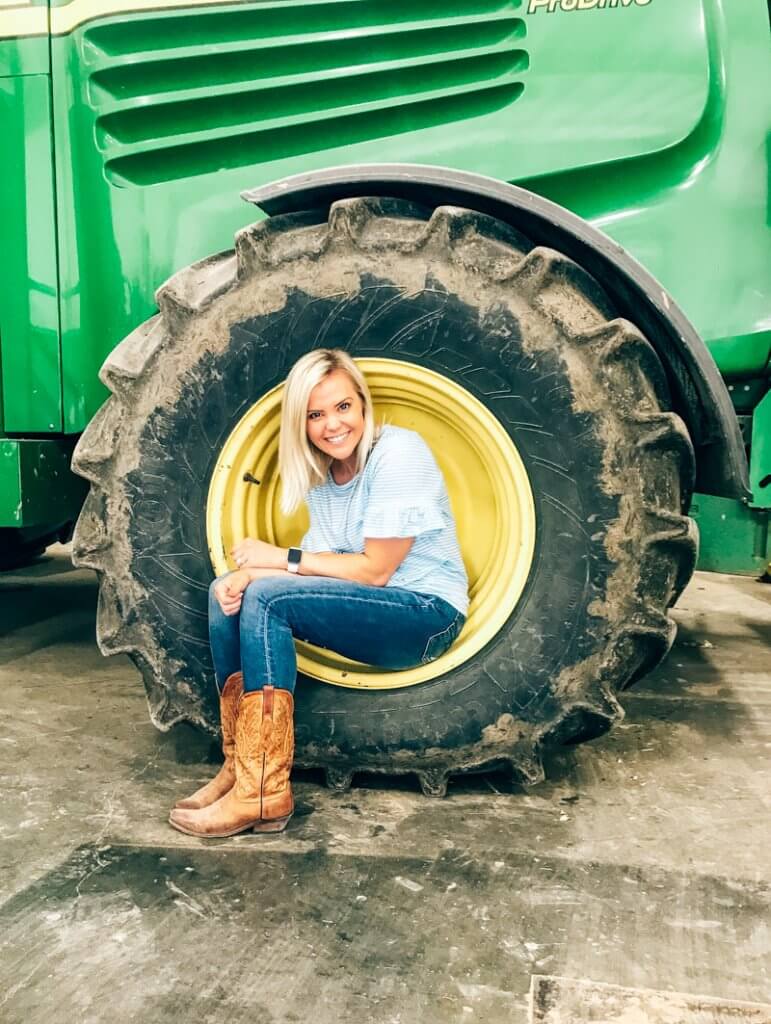
Lunch was delicious! Grilled chicken wrap, salad with feta cheese & variety of fruit, veggies + ranch dip, and homemade chips These black bean brownies by @lauren_lane_culinarian were also amazing!
Please head to the Midwest Dairy website if you want to learn more about dairy farming or dairy in general. They have a ton of great information there!
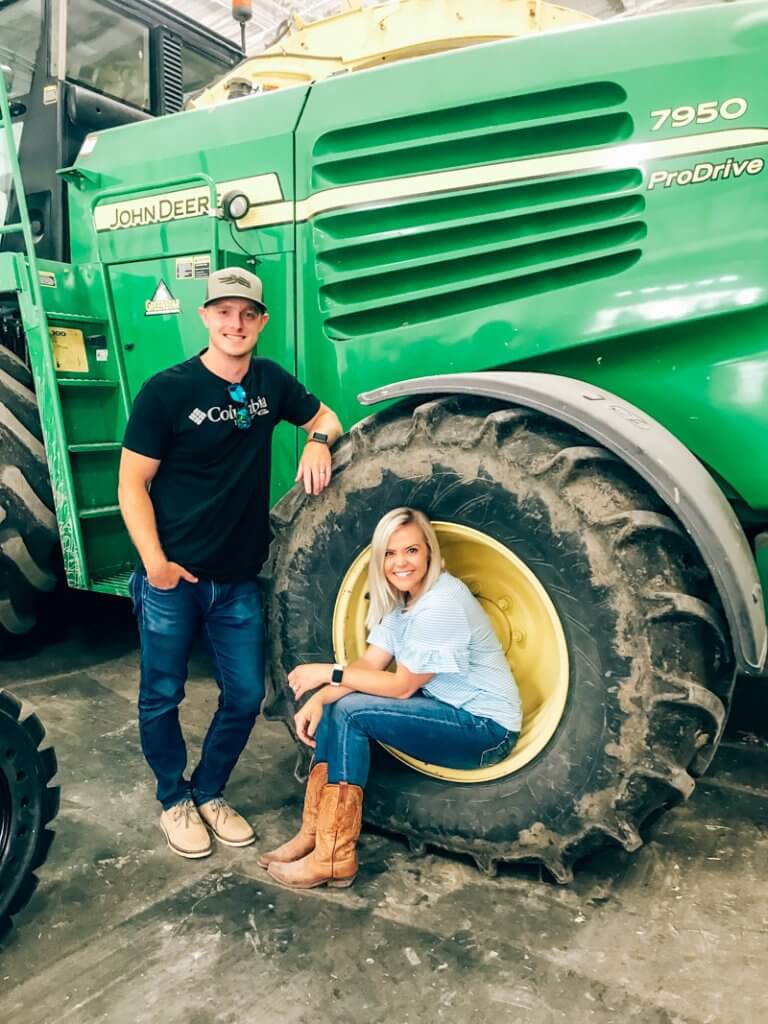
Thank you so much for reading and donating if you have the ability to do so. I know that the children and families who benefit from your generosity are so grateful. I hope you enjoyed learning more about the behind the scenes at a dairy farm. Do you have any more questions about our tour or the dairy industry? If so, please drop them in the comments below! I’ll answer them to the best of my ability, or reach out to a farmer who can! : )
Until next time,
Shanna

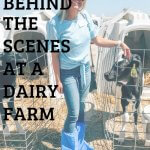
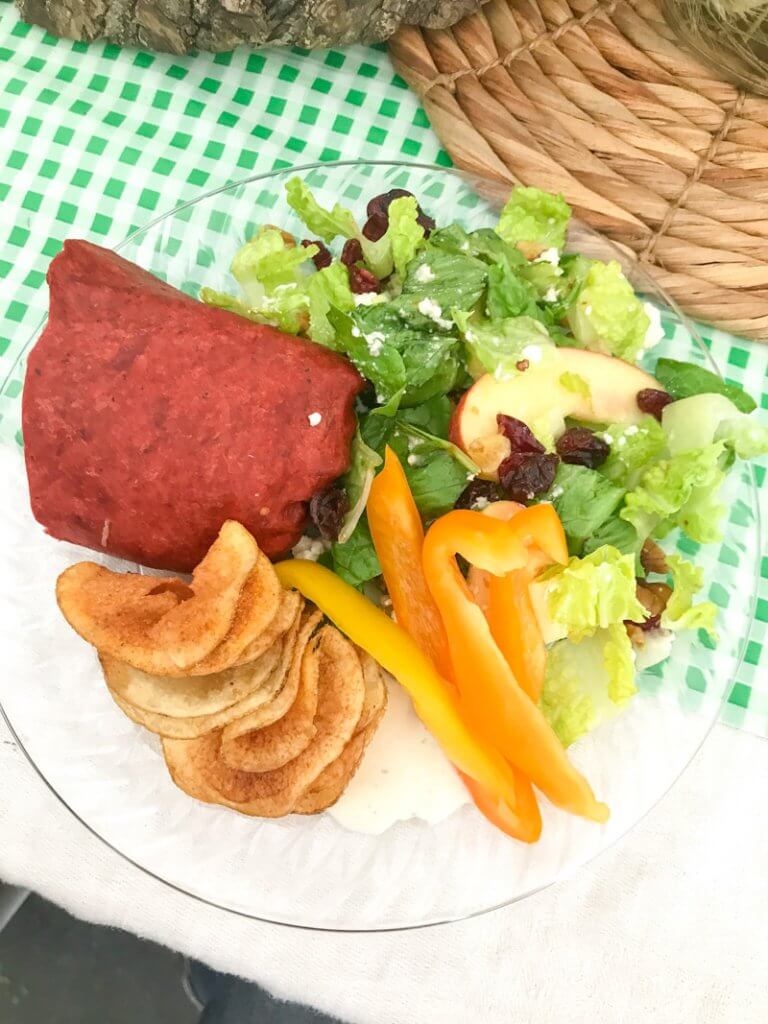

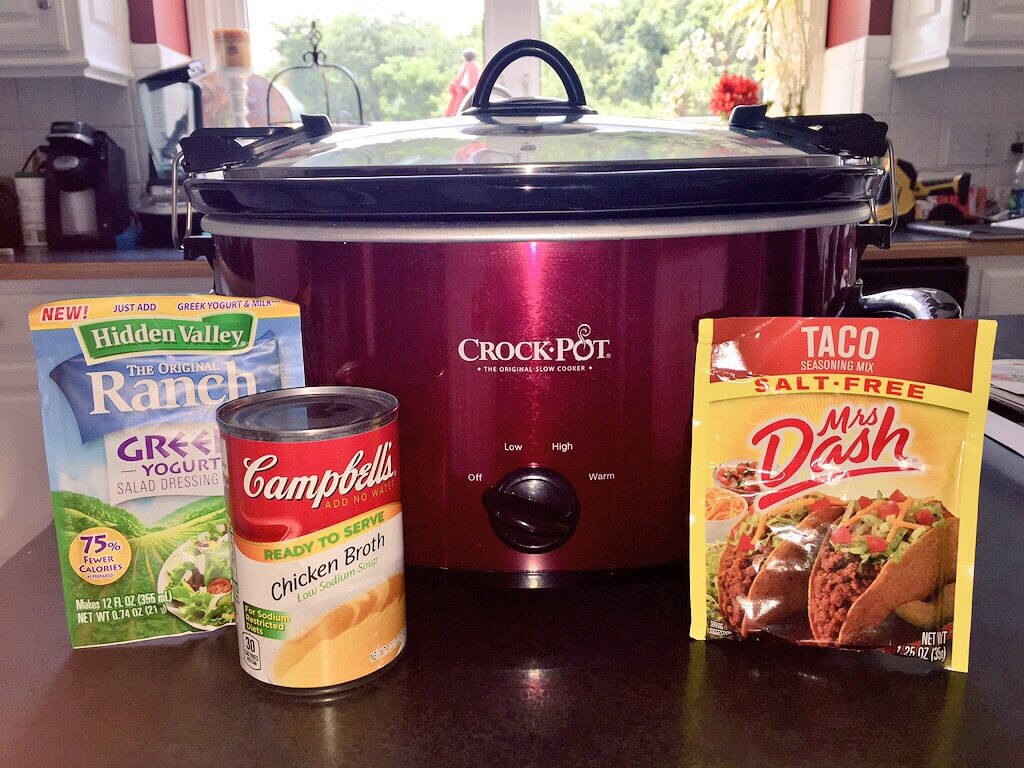
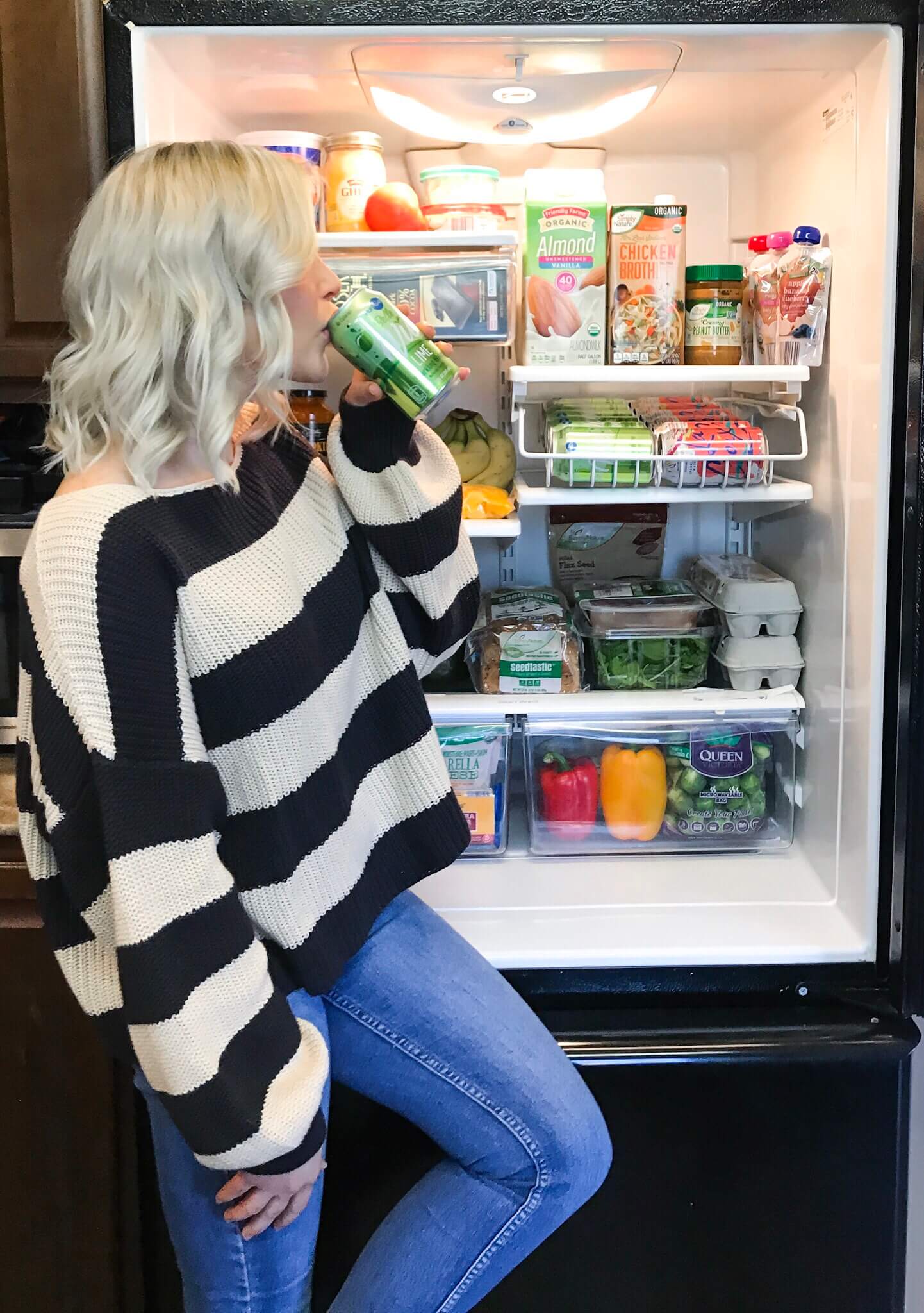



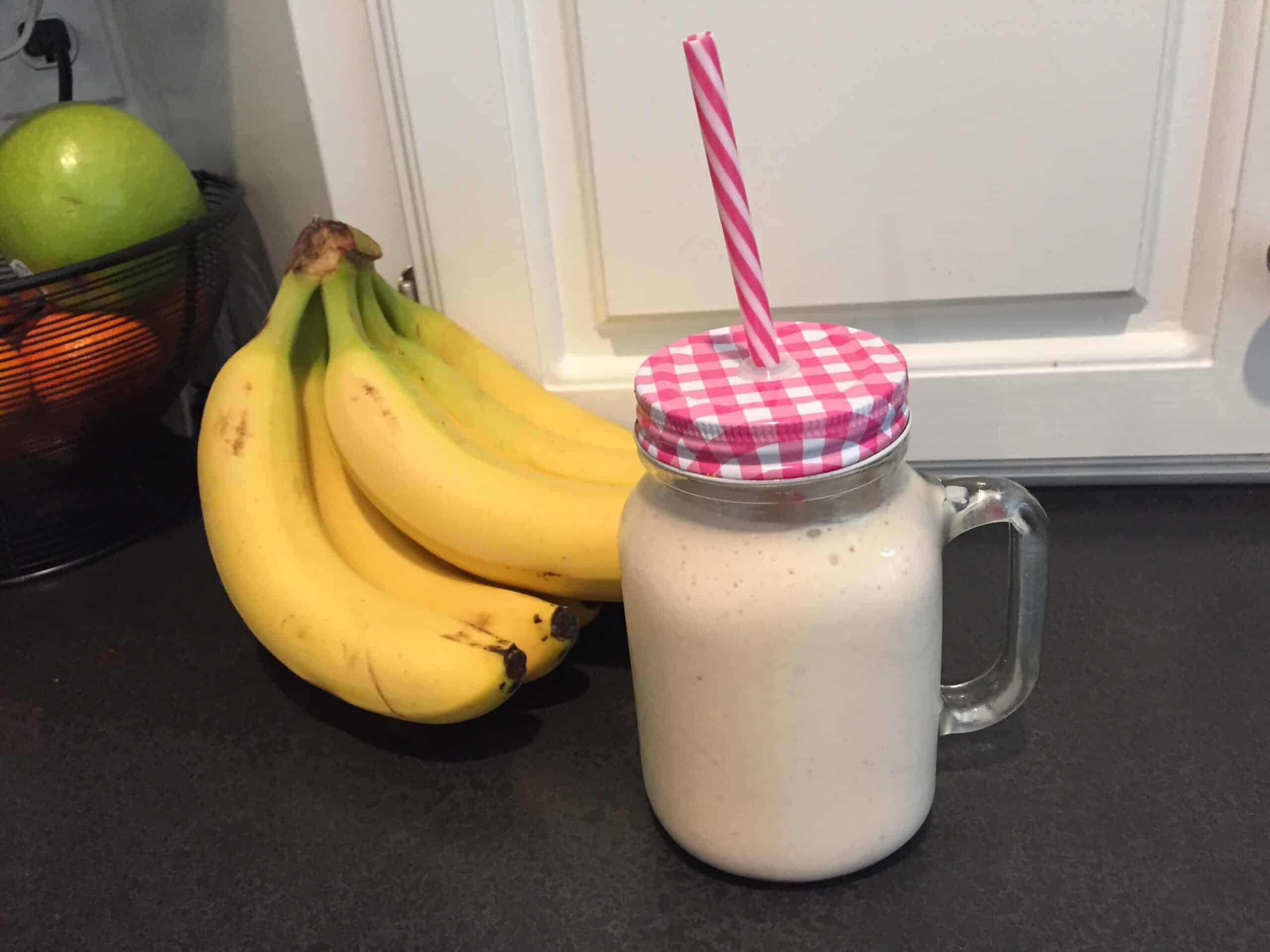
That was super informative!! I enjoyed learning more about how dairy farms work, and how well they take care of the animals! Thank you for posting! 🙂
Thank you Momma! I’m glad you enjoyed it! : ) I learned so much from going there that I wouldn’t have known otherwise!